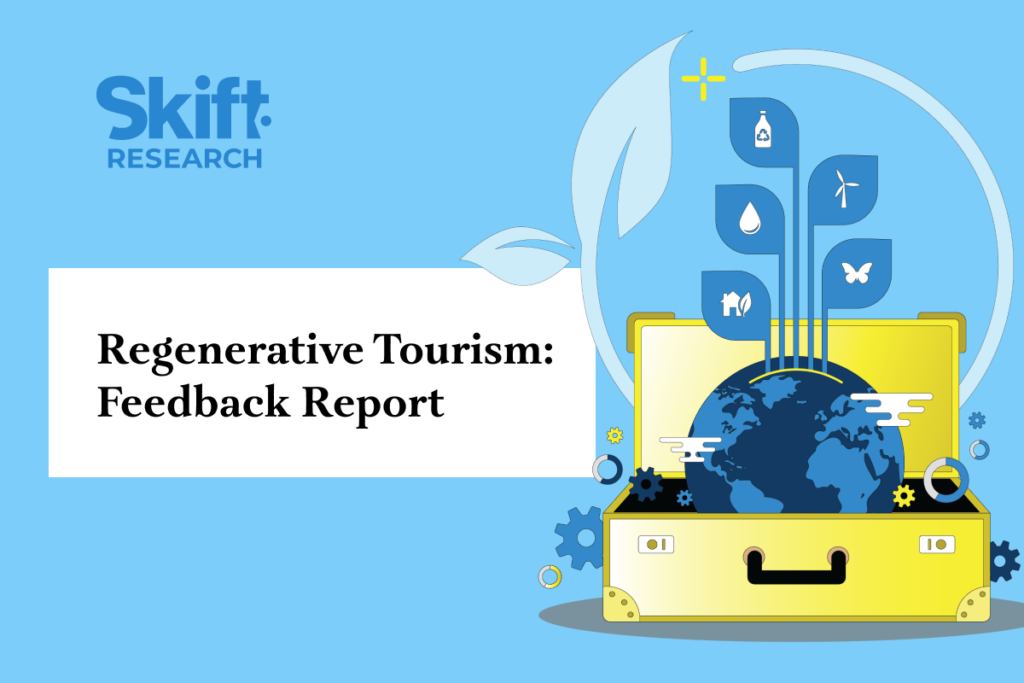[ad_1]
Skift Take
Many feel regenerative tourism has the potential to transform the industry. But the continued resistance to a clear definition or measurement criteria may hinder its potential.
In the first entry in our Fact from Fiction series on sustainability issues in tourism, we tackled the emergence of âregenerative tourismâ and applied a critical lens that highlighted some of the opportunities and risks.
We summarized it as a leap forward from sustainable tourism in that it seeks to maximize positive impacts rather than merely minimizing harms. That’s a common definition but one that is not fully agreed upon within the regenerative movement.
Following the publication of the report and the subsequent podcast and LinkedIn Live session, we received wide-ranging feedback. Most of the feedback was positive, but some, particularly from those in the regenerative movement, took issue with the conclusions. Overall, this sparked useful discussion and provided the basis of our newly-published Feedback Report.
A Contentious Topic That Requires Data
Regenerative tourism is sometimes regarded as a puzzle for the industry, described by one commenter on LinkedIn as a âbeast of a topic.â
In revisiting the topic of regenerative tourism, we conducted a second round of interviews. One tourism impact specialist told us: âI think that, especially post-Covid, the term [regenerative tourism] really got supercharged without a huge amount of foundation to it all. You’ve highlighted an interesting issue that needs to have more discussion and more debate around it, because it isn’t well defined, and it is definitely prone to greenwashing.â
Critiques of our position on regenerative tourism fall into several categories:
- Definition: Framing regenerative tourism as maximizing the positive impacts of tourism rather than minimizing its harms is too simplistic. It is better understood more holistically – for example as a paradigm shift away from older consumer models of tourism, focused instead on âfinding answers in natureâ and drawing on traditional wisdom to better respect humanityâs place within the natural ecosystem.
- The problem with focusing on outcomes: To discuss regenerative tourism in the context of outcomes is simplistic. One response: By âfocusing only on outcomes and ignoring the fundamental assumptions, logic and forms of thinking that underpin regeneration, the concept is trivialized, and its real potential understated.â
- No agreement on what counts as regenerative tourism: The Victoria and Alfred Waterfront in Cape Town was cited by a sustainable tourism expert we interviewed as an exemplary case of regenerative tourism but was dismissed by a commenter on Linkedin as having âlittle to do with regenerative tourism.â
- Measurement/demonstrating impact: A metrics-driven approach is contrary to the holistic approach that regenerative tourism embodies and reduces a deeper understanding of regeneration to numbers.
It is this last critique that we view as the biggest risk in terms of greenwashing activity.
Solving the Measurement Puzzle
While the lack of an agreed-upon impact model remains a challenge, some organizations have taken more science-based approaches to regenerative tourism. For example, Weeva and others have already pioneered examples of custom approaches to management of regenerative tourism projects at site level.
Even that, however, is a point of contention. According to one commenter on Linkedin, âregenerative development is not about hyper tracking sustainability targets. How is Weevaâs tool a compelling approach to regenerative tourism? You are right, itâs hard to scale regenerative development at this stage but positive change is very, very hard and this continued misinformation, especially from leaders in tourism information sharing, only adds to that.â
In our view, resistance to measurement just raises more questions. If regenerative tourism is being credibly practiced, how does demonstrating its positive impact harm the endeavor? It would most likely have the opposite effect, generating leadership and an aspirational following among others in the sector who wish to learn from their approach.
Materiality: A Potential Pathway?
A challenge to any effort to standardize regenerative tourism is that it tends to be site-specific, tailored to the social, environmental, and other priorities in the area of operation. For example, a regenerative eco-lodge in a coastal area would place a greater focus on ocean stewardship and marine ecosystems than than an inland operation with an urban renewal and community uplift focus.
One solution to this is the concept of âmateriality,â which involves determining which issues or metrics are most important for an organization to focus on, rather than applying a blanket set of metrics across all organizations.
Such an approach could present a solution to the problem of standardization posed by regenerative tourism and some businesses and destinations are already implementing something similar.
Summing Up
Regenerative tourism remains ill-defined, and even its most passionate advocates resist clarifying it. It also remains vulnerable to dismissal by critics as âanother buzzwordâ and to hijacking by greenwashing. If regenerative tourism is to be a transformative force in the industry at scale, these roadblocks need to be overcome.
Skiftâs in-depth reporting on climate issues is made possible through the financial support of Intrepid Travel. This backing allows Skift to bring you high-quality journalism on one of the most important topics facing our planet today. Intrepid is not involved in any decisions made by Skiftâs editorial team.
[ad_2]
Source link

